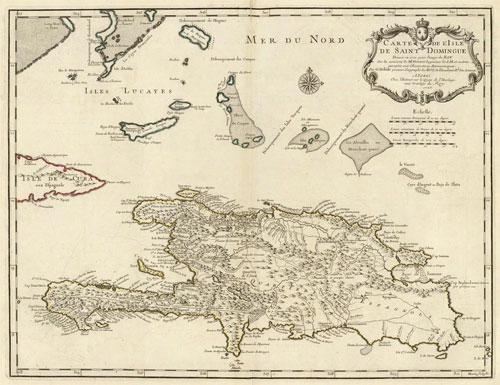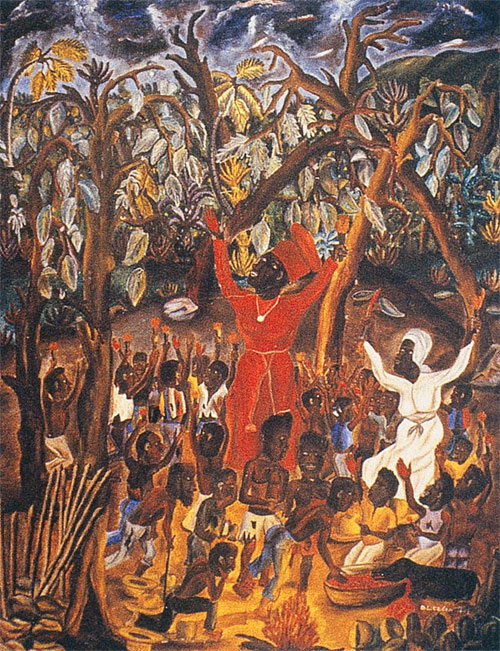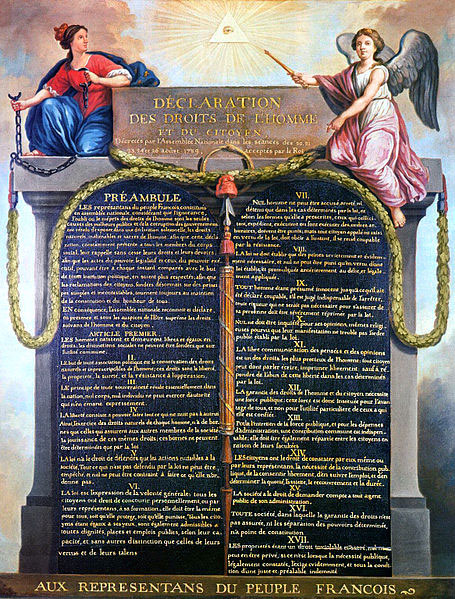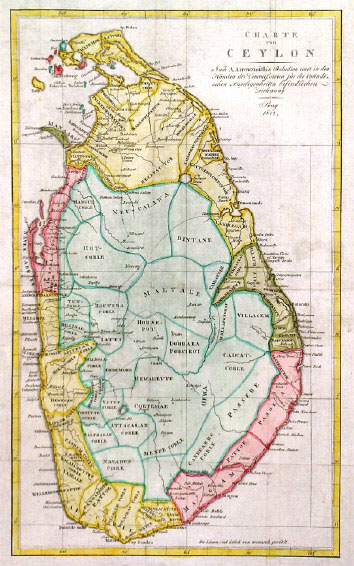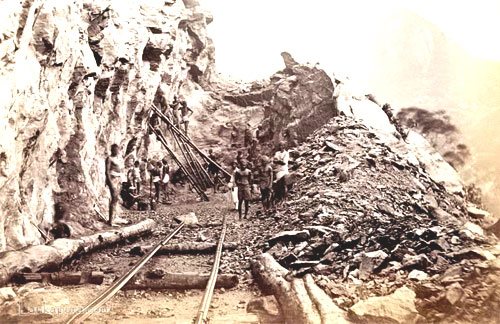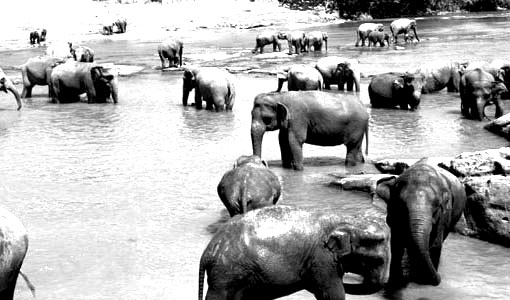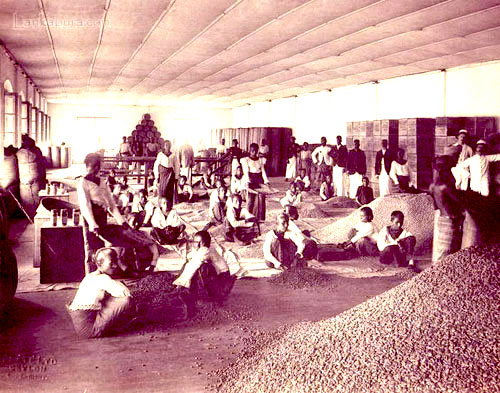RESOURCES
Chapter Notes
Chapter 13: A Tale of Two Countries - Haiti and Ceylon
By the 18th century, Saint-Domingue - known later as Haiti - was the richest colony in the Caribbean, producing 60 percent of all the coffee consumed in Europe and exporting more sugar and coffee than all of the British West Indies combined.
Ceremony of Bois-Caiman by Dieudonne Cedor Nearly 40,000 Europeans, mainly French, had set up farms producing coffee, sugar, cotton and indigo – plantations that were worked by three quarters of a million African slaves. A writer visiting Saint-Domingue in the 1780s commented that the planters were living on the edge of a volcano – both physically and metaphorically. He was both right and prescient. A little over a decade later, the colonists had either fled to neighbouring countries or had been slaughtered in a bloody slave revolt. Plantations were burned to the ground. The black republic of Haiti was about to be born, but the coffee empire of Saint-Domingue had come to an end.
Over the years, Saint-Domingue had developed a significant mixed-race population. Children of liaisons between French planters and slaves were (if male) often adopted by the slave owner and sent to France for their education. Educated, free and often propertied, they were strongly influenced by the revolutionary fervour gripping France as the century was coming to an end. Certainly many of them would have participated in the great debates taking place in Parisian coffeehouses regarding the rights of man and the irony could hardly have escaped them that the very coffee fuelling their discourse had been produced back home thanks to the manacled prowess of their enslaved relatives who had no rights whatsoever.
It took three wars to finally conquer Ceylon – the English and their hired mercenaries suffering serious losses. But for the English planters, winning the war was only half the battle. Before the plantations could be constructed, thousands of acres of dense forestland had to be cleared.
Much time was needed to cut down the trees and dig out the stumps before the land was ready for planting – a job that was 'given' to native Singhalese who no longer had rights of tenure. Over the following decades a million Tamals from Southern India were brought in to till the soil. Unlike, the West Indies, slaves weren't used but the severe demands of the contract labour system meant impoverished people who worked the fields were only one step away from serfdom.
Writing in the mid-19th century, an English traveller spoke of his horror at the mass slaughter of elephants that, up till then, had freedom to roam but now were being sacrificed so vast plantations could be built without fear of rampaging beasties.
In 1864, a planter's directory for Ceylon, listed over 800 coffee estates producing, in total, nearly 70 million pounds of coffee for export back to England. Young men who had never seen a coffee tree came to Ceylon by the shipload, lured by the thought of a plot of land, easy money and good weather. Speculators took note. The price of property shot up. The Ceylonese land rush was on. Then in 1869 something happened that changed the course of history for Ceylon - coffee rust, a disease so virulent that by 1884, fifteen years after the fungus was first recognised, the entire coffee industry of Ceylon lay in ruins.
|
